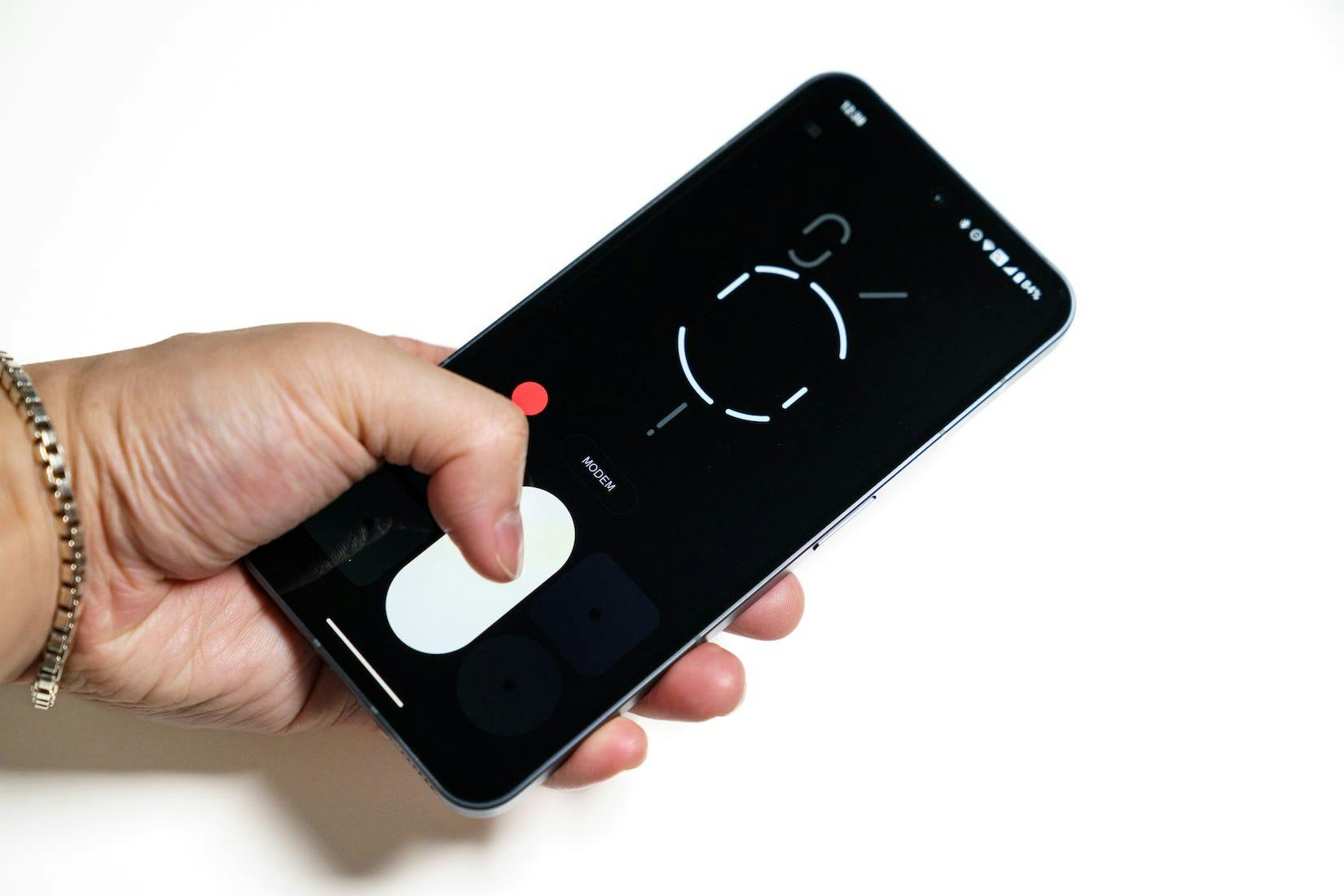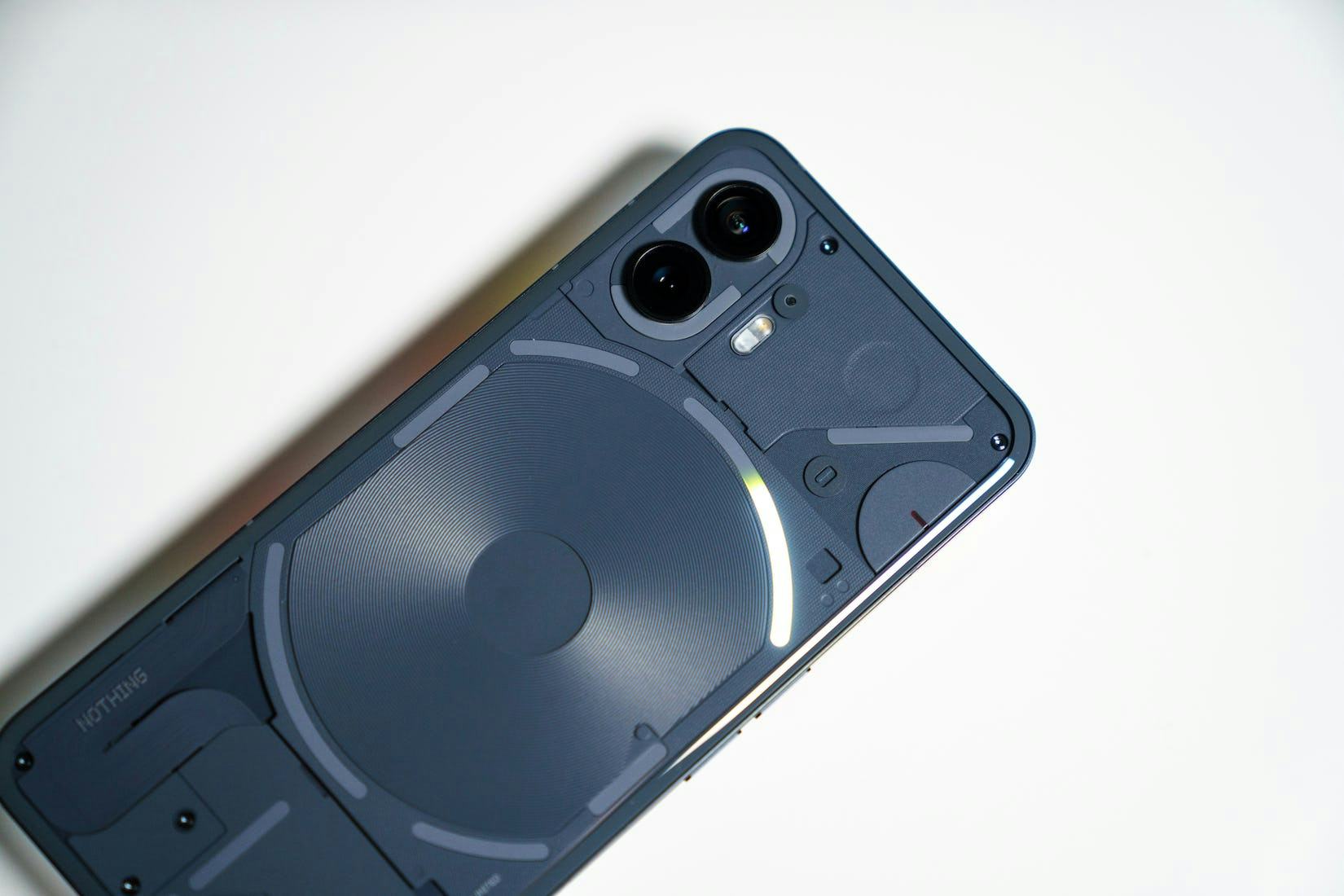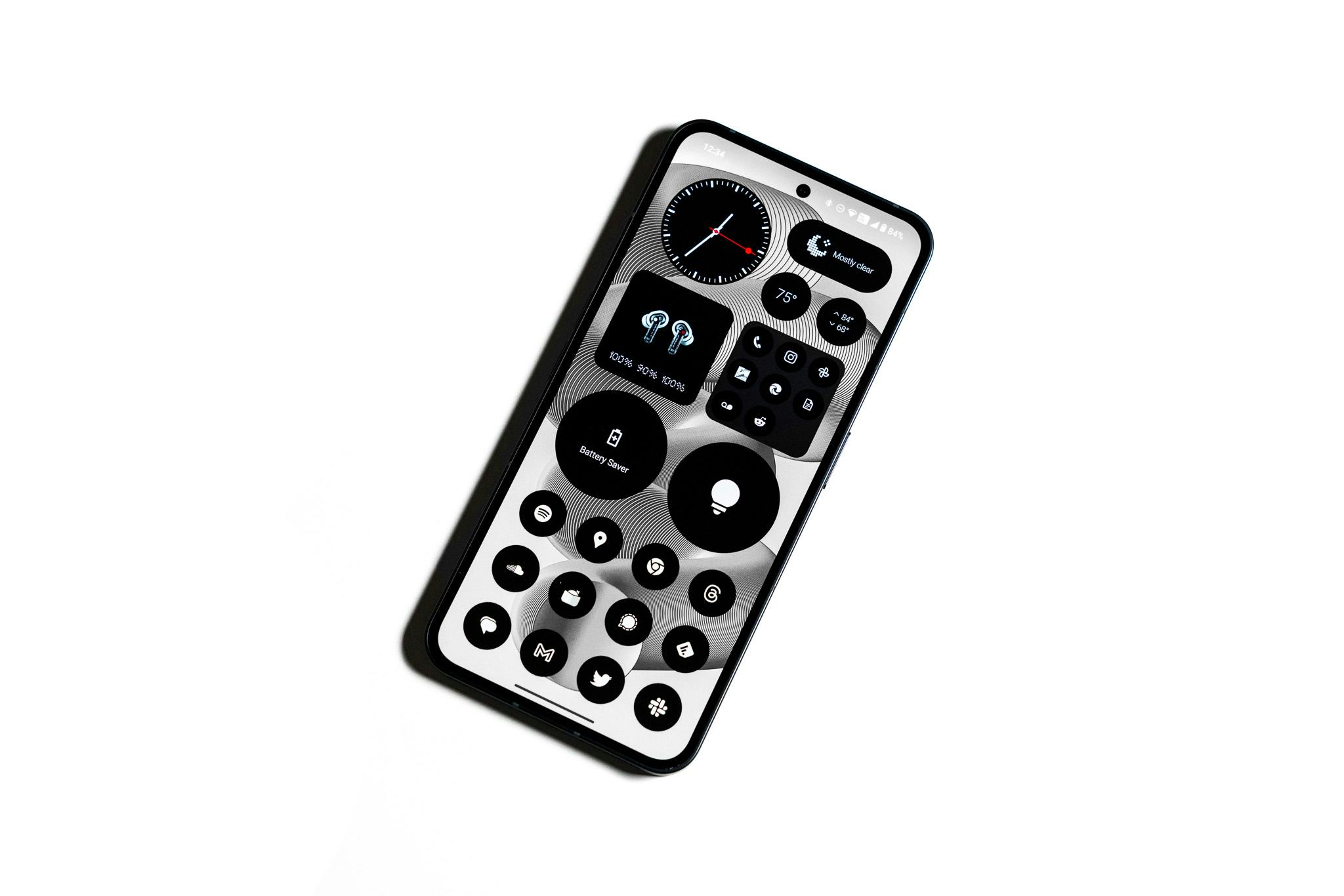
When Nothing took the plunge into smartphones, it opened the door to lots of obstacles, but also a whole world of possibilities.
Sure, there are risks with making transparent wireless earbuds that look different (the Ear 1 and Ear 2 wireless earbuds do stand out in a crowded space), but if wireless earbuds are a risk, then phones are like jumping into a shark tank. And those risks are coming not just in the form of aesthetics with the Phone 1 and Phone 2 — a transparent design and an LED “Glyph Interface” — it’s everything inside.
As Nothing and its smartphone ambitions slowly mature, there’s a lot more going on inside (read: in Nothing OS) than there used to be. That’s not by accident, either. According to Akis Evangelidis, co-founder of Nothing, software isn’t just a meat and potatoes part of making a phone, it’s a chance to move the needle.
“We've been seeing very high-end software, but not with a real kind of intent or clear vision behind it.”
“The software experience, that's where you can have a much stronger take in flexibility, in terms of how you can own the user experience, both on the product level, but also on an ecosystem level,” says Evangelidis.
“[Phone software] has been quite conservative, and some other brands have been going a bit too crazy as well. We've been seeing very high-end software, but not with a real kind of intent or clear vision behind it.”
It’s What’s on the Inside That Counts
So, Nothing is trying to make its mark in lots of small ways. Recently, it released Nothing OS 2.5 which adds a lot to the Nothing OS experience. Some of it is superficial, to be sure — a light riff on a fairly familiar software experience. Some features, however, reveal the truth about what Nothing is really after.

For example, widgets — more of which are coming to Nothing OS 2.5 open beta this month — encourage users to shy away from opening apps, instead gleaning bits of information at a glance. Or a new timer that uses the Phone 1 and 2’s LED Glyph Interface to alert you of upcoming Google Calendar notifications (within 5 minutes) or when your Uber is going to arrive.
Again, it’s small stuff, but Nothing hopes that it adds up to a whole that’s greater than the sum of its parts.
“We're not doing widgets just for the sake of doing widgets — just as being the thing that we can customize within Android,” Bruno Viegas, Software Product Design Lead at Nothing, tells Inverse. “The reason why we're doing that is to actually try and redefine the way we interact with a smartphone.”
“The reason why we're doing [widgets] is to actually try and redefine the way we interact with a smartphone.”
Viegas says a lot of the re-definition comes down to not the phone itself, per se, but everything that we load it up with.
“Think about it, every single smartphone you grab at the moment — an Apple device, Samsung, whatever — all of them act, as soon as you unlock the phone, all of them are portals to third-party services,” Viegas says.
“Basically, the phone itself becomes nothing more than an enabler for you to get to some of the experiences. I think a smartphone can be a lot more than that. And that's where the functional aesthetics comes in.”
But changing how we view the phone is a lofty goal, especially so given how entrenched we are in the duopoly of mobile operating systems.
And though hardware like the Glyph Interface on the Phone 1 and Phone 2 play a role in closing that portal to an extent (or at least turning it into less of a vortex), most of Nothing’s ambitions are squarely centered on software.
Some of Nothing’s tweaks may just seem like a re-skin of Android, but Viegas says the idea is “functional aesthetics.” On the surface, that may seem like classic tech company marketing, but it tracks with some of Nothing’s bolder choices inside Nothing OS.

All apps on the home screen, for example, get a monochromatic treatment in Nothing OS’ default mode. The theory is that by giving each app the same level of priority visually (no Snapchat yellow or Instagram gradient to catch your eye) that users are less likely to get sucked into apps every time they pick up their phones.
The best part is that Nothing’s monochromatic skin does work. That’s paradoxically also the worst part. Using Nothing’s OS makes apps difficult to find — you don’t realize how much you’re relying on visual cues to pluck something out of your phone screen until they’re all muted.
A Tough Sell
So it begs the question. Even if people know that a drastically re-skinned experience could technically make the act of using a Nothing phone healthier, would they knowingly opt to do so? Even if you’re sick of having your attention commandeered by apps and social media, a phone needs to be functional.
According to Viegas, he and Nothing’s other designers are willing to make that wager.
“At Nothing, we don't look at users for solutions. We look at users to identify opportunities. And then we make assumptions based on our understanding of the world to come up with new features,” Viegas says.
“I think all the big design innovations happen that way. No one asked for an iPhone. No one asked for a car. And if you ask people what they wanted at that time, they probably would have said a faster horse.”
“At Nothing, we don't look at users for solutions. We look at users to identify opportunities.”
So what’s next for Nothing? It’s hard to say for sure, but ambient computing seems to be on the radar. In my interview with Viegas, I allude to how Nothing’s ethos regarding software fits into what has been a larger ambient computing trend this year — products like Humane’s Ai Pin have made quite a splash — and was informed by a representative that Nothing can’t comment on “future” plans.
Take that reaction for what you will, but it’s clear that Nothing’s intention of making phones a more welcome presence in our lives isn’t going anywhere.
“Obviously, this was just the first stage in what we believe we can do from a well-being perspective — there's a lot of these digital well-being books going around, especially recently,” says Viegas. “But I also believe there's a lot more we can do.”







